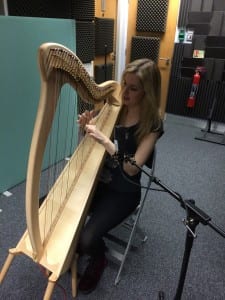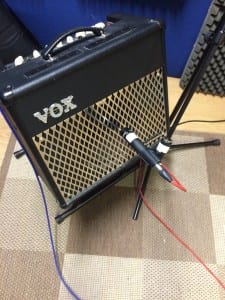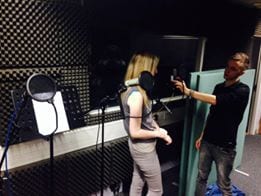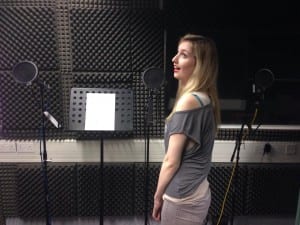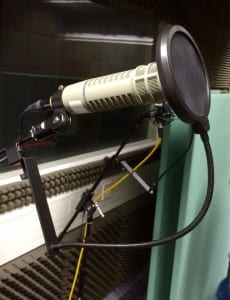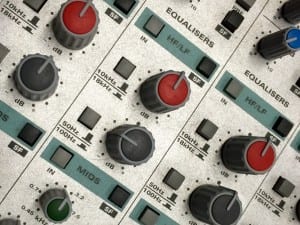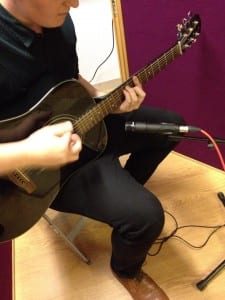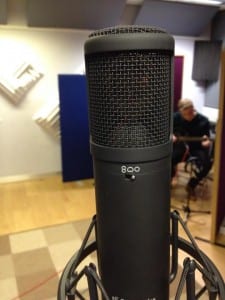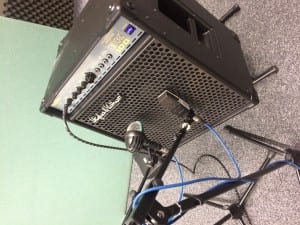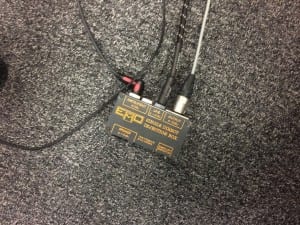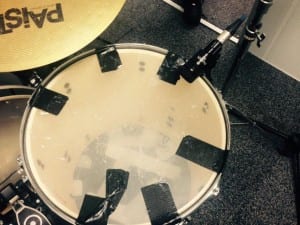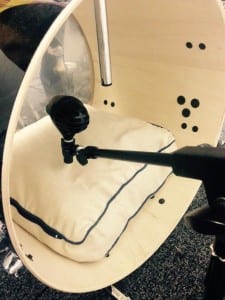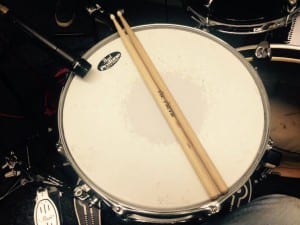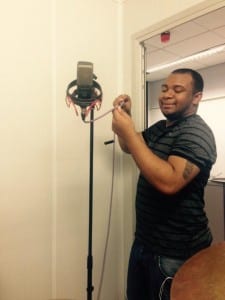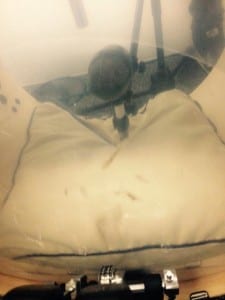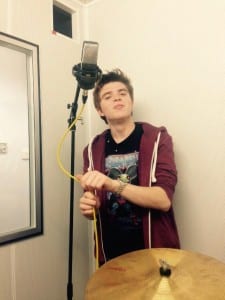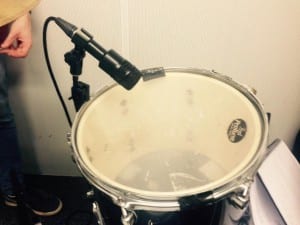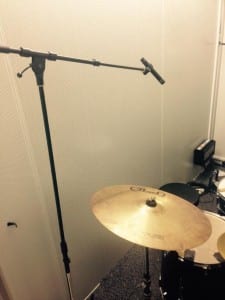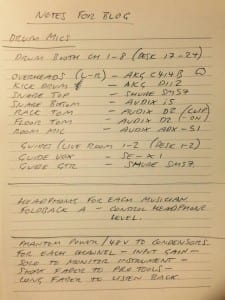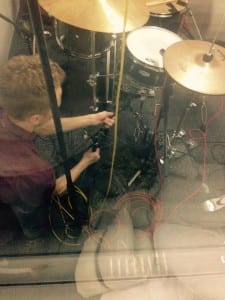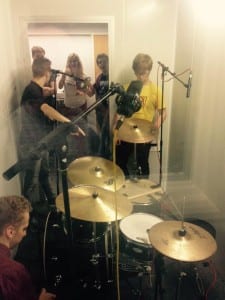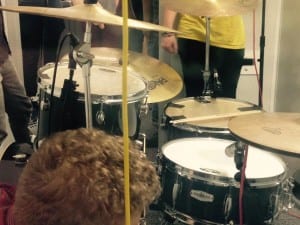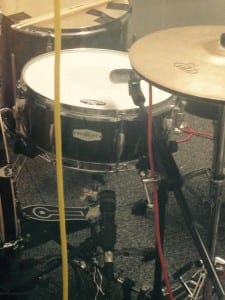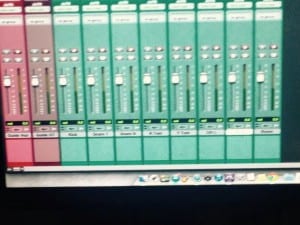Today was extras day, so we decided to set up in the Live room and the dead room, we set the Harp up in the live room, using the Jack output on the harp to DI straight into a box and then into the wall snake. we also set up an AKG 414 to get the sound of the acoustic harp. At first we had a bit of trouble getting a signal from the DI box, but it turned out that someone had put the jack cable into the line in instead of the instrument input. after we fixed that we listened to both of the signals together, and blended them to get a nice, balanced sound.
after we recorded it we listened back to the Harp to check everything was okay, and then proceeded to set up the electric guitar amp. we set up an SM57 microphone against the amp, and an AKG 414 as a room mic, set to omni-directional to pick up the sound of the whole room. we spent about 15 minutes discussing what tone we’d like to fit the song, but the guitar choice was wrong for the song, whereas this piece would have suited something like a stratocaster, we only had a Les Paul, with pickups more suited to heavy music, rather than pop rock.
after a lot of tweaking with the guitar and the amp we found a usable tone, then we went through to the control room, set up the headphone mix and microphone levels, and went for a take, there was some mis communication over the structure of the song but in the end we managed to record 2 usable solos for the middle and end of the song. when we came to recording the piano it was relatively easy, we just used the line out from the piano and plugged it into the DI inputs on the snake, we set up the headphone mix and the gain on the line signal and were able to record in one take, after this we had the chance to record a few string swells and then we decided we had enough to work with.
